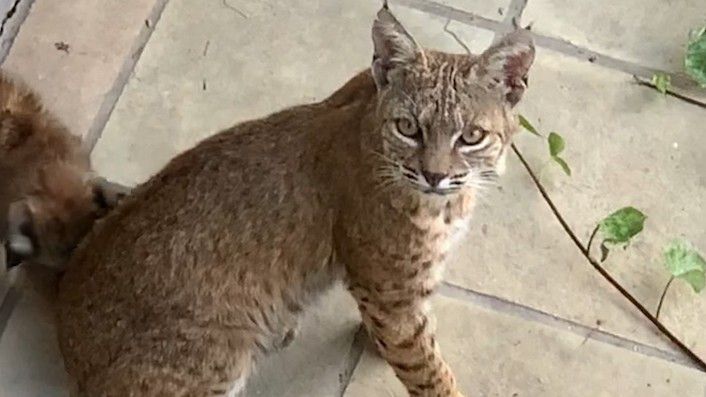Brooklyn kitten ID’d as second NYC avian flu victim after contracting virus from another cat
March 15, 2025
A Brooklyn kitten has been identified as the second confirmed feline victim of avian flu in New York City — having contracted the contagion from another infected cat.
Valentino, a 1-year-old domestic shorthair, was technically the first cat in the Big Apple to die from the H5N1 virus after undergoing an emergency euthanasia on Feb. 1, Dr. Natara Loose of The Neighborhood Vet in Bushwick, told The Post.
His case was only confirmed this week after a second cat, an 8-month-old Upper West Side kitten, succumbed to the same fate.
“Legitimately, had this little kitten not died recently and had it not been confirmed this week, I would still be in the process, probably for an unknown period of time, of not knowing how Valentino got it or how he died … no one would have put it out there, so it’s good news for the public,” Loose, Valentino’s veterinarian and owner, explained.
Valentino was put to sleep just 24 hours after he recorded a jaw-dropping 106-degree fever.
-snip-
“I euthanized him and he was here. I’m kissing him,” Loose said in a social media video, indicating she was holding Valentino close when he was put to sleep.
Government officials were suspicious, however, because Valentino had not consumed any raw meat — which had caused the deaths of at least 85 cats across the US since 2022.
Suspecting her beloved kitten’s cause of death, Loose submitted Valentino for a necropsy, where it was confirmed that every organ of his body was infected by bird flu via tainted food.
-snip-
Further investigation revealed that Valentino had contracted the virus from a third cat, “Cat C,” who had been rushed into The Neighborhood Vet days before Valentino’s death.
“That cat had a mild fever. No respiratory signs, just a little uncomfortable in his belly and went home the next day completely normal,” Loose said.
“I read through the history of the cat and the cat had eaten the same food.”
-snip-
Though Valentino lives at the vet office, he did not have any direct contact with Cat C, Loose said, leading her to believe the avian flu was transmitted through the air.
continued. https://nypost.com/2025/03/15/us-new...-infected-cat/
March 15, 2025
A Brooklyn kitten has been identified as the second confirmed feline victim of avian flu in New York City — having contracted the contagion from another infected cat.
Valentino, a 1-year-old domestic shorthair, was technically the first cat in the Big Apple to die from the H5N1 virus after undergoing an emergency euthanasia on Feb. 1, Dr. Natara Loose of The Neighborhood Vet in Bushwick, told The Post.
His case was only confirmed this week after a second cat, an 8-month-old Upper West Side kitten, succumbed to the same fate.
“Legitimately, had this little kitten not died recently and had it not been confirmed this week, I would still be in the process, probably for an unknown period of time, of not knowing how Valentino got it or how he died … no one would have put it out there, so it’s good news for the public,” Loose, Valentino’s veterinarian and owner, explained.
Valentino was put to sleep just 24 hours after he recorded a jaw-dropping 106-degree fever.
-snip-
“I euthanized him and he was here. I’m kissing him,” Loose said in a social media video, indicating she was holding Valentino close when he was put to sleep.
Government officials were suspicious, however, because Valentino had not consumed any raw meat — which had caused the deaths of at least 85 cats across the US since 2022.
Suspecting her beloved kitten’s cause of death, Loose submitted Valentino for a necropsy, where it was confirmed that every organ of his body was infected by bird flu via tainted food.
-snip-
Further investigation revealed that Valentino had contracted the virus from a third cat, “Cat C,” who had been rushed into The Neighborhood Vet days before Valentino’s death.
“That cat had a mild fever. No respiratory signs, just a little uncomfortable in his belly and went home the next day completely normal,” Loose said.
“I read through the history of the cat and the cat had eaten the same food.”
-snip-
Though Valentino lives at the vet office, he did not have any direct contact with Cat C, Loose said, leading her to believe the avian flu was transmitted through the air.
continued. https://nypost.com/2025/03/15/us-new...-infected-cat/




Comment